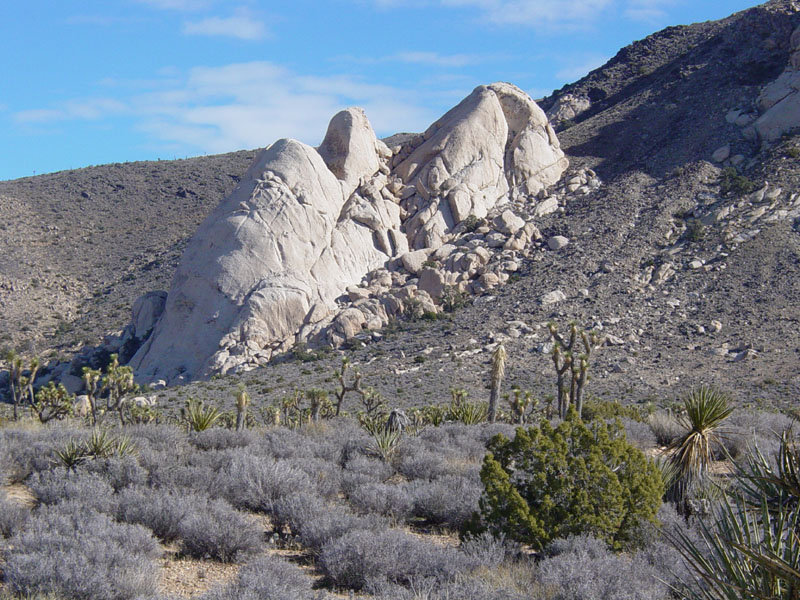
 |
| These domes of exfoliating granitic rock are on the northeast flank of Ryan Mountain. The domes are the remnants of Mesozoic-age molten rock material that melted its way, or was injected into, more ancient bedrock (the dark schist and gneiss visible on the upper-right side of the image) (Matti and others, 1994; Barth and others, 2004). When the molten rock crystallized it left behind these igneous plutons (great bodies of granitic rock). Originally, the plutons probably formed many miles below the surface, but uplift and erosion over millions of years have exposed these rocks in the Little San Bernardino Mountains. Exfoliation is a weathering and erosion process of rocks that formed under great pressure. As erosion strips away the overburden, the rock expands and fractures form parallel to the surface in rock masses that are of uniform texture/composition (like a granite pluton). Weathering breaks down the rock along the fractures, and surface erosion and mass wasting remove the overburden, creating rounded domes -- like these shown in the image (Gilbert, 1904). |